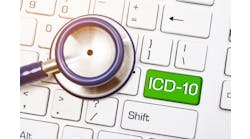In March, CMS concluded its first successful week of so-called end-to-end testing of ICD-10 codes. The set, which involved nearly 15,000 test claims submitted by 660 healthcare providers, was remarkably successful – nearly 81 percent were processed cleanly and accepted. For all the moaning over provider and payer preparedness, this seems like an achievement worth celebrating.
But once again, we are hearing calls for CMS to provide a “grace period” or a “hardship exemption” during which providers could use either ICD-10 or ICD-9. With ICD-11 already on the WHO’s horizon for 2017, this sort of defiance wins American providers nothing but increased isolation from the rest of the medical community. I get it; we are all fatigued by the on-again, off-again status. But delaying the inevitable isn’t going to help healthcare.
New delays will create additional complexity, confusion, uncertainty and costs. I pity the vendors who have emptied R&D budgets developing new processes and training clients like me how to make the switch. Practices like mine have spent time and money completing training modules, hiring consultants, hiring CBO personnel and even, in some cases, taking out short-term lines of credit to ease cash-flow disruptions. So much wasted time, money and effort come with a delay.
Implementing a new, comprehensive set of diagnostic and billing codes won’t be easy. I relish the disruption as little as the next person. But improving the integrity of our clinical documentation is worth the collective headache. ICD-10 will replace a classification system that’s over 30 years old and woefully outdated. Current terminology produces limited data and is sometimes inconsistent with current medical practices. ICD-10 will, at minimum, make the way we document patients’ health more precise. At most, it will improve quality and patient safety, so we can make better decisions for and with them. Either way, it’s a move in the right direction toward this treasure trove of health information data that healthcare produces and mines.
I believe the short-term inconveniences of ICD-10 are worth the long-term gain. So I was glad to hear CMS administrator Marilyn Tavenner write in a recent blog post that “CMS is ready for ICD-10.” After years of delay, it should be. Vendors – after years of preparation, workflow enhancements and coaching – should be too, and so should the clearinghouses, hospitals and health plans. The 660 providers in the testing sample were ready. At my practice, our message to CMS is clear: It’s time to fish or cut bait. We’ve got work to do.
Successful ICD-10 testing shows industry ready to take next step to modernize healthcare
The blog in February 2015 by Marilyn Tavenner, former Administrator, Centers for Medicare and Medicaid Services, announced that CMS had recently successfully completed their first week of end-to-end testing of new ICD-10 coding. Approximately 660 providers and billing companies submitted nearly 15,000 test claims. This successful week of testing continues to put CMS on course for successful implementation of this important initiative that better reflects modern practice of medicine by Oct. 1, 2015.
“Medicare recently tested ICD-10 claims processing with a variety of stakeholders including healthcare providers, billing agencies, and equipment suppliers. Overall, participants in the January 26 to February 3 testing were able to successfully submit ICD-10 claims and have them processed through our billing systems. To the extent that some claims were rejected, most didn’t meet the mark because of errors unrelated to ICD-9 or ICD-10”, wrote Tavenner.
Tavenner said their testing identified that one point was causing some confusion in the healthcare community and beyond.
They are emphasizing that they must use:
• ICD-9 for services provided before the October 1 deadline
• ICD-10 for services provided on or after October 1
That means ICD-10 can be used only for test purposes before October 1. And only ICD-10 can be used for doctor’s visits and other services that happen on or after October 1. ICD-9 cannot be used to bill for services provided on or after October 1. This rule applies no matter when the claim is submitted, so claims submitted after October 1, 2015, for services provided before that date must use ICD-9 codes.
These rules and others around adopting ICD-10 apply to all healthcare providers, not just those who accept Medicare or Medicaid. So, like CMS, health insurance plans across the country are engaging in robust testing programs with doctors, hospitals and other healthcare providers and suppliers. No major issues have emerged in the course of testing.
The website cms.gov/ICD-10, offers many resources, including the Road to 10 tool, which was designed especially for small medical practices.


